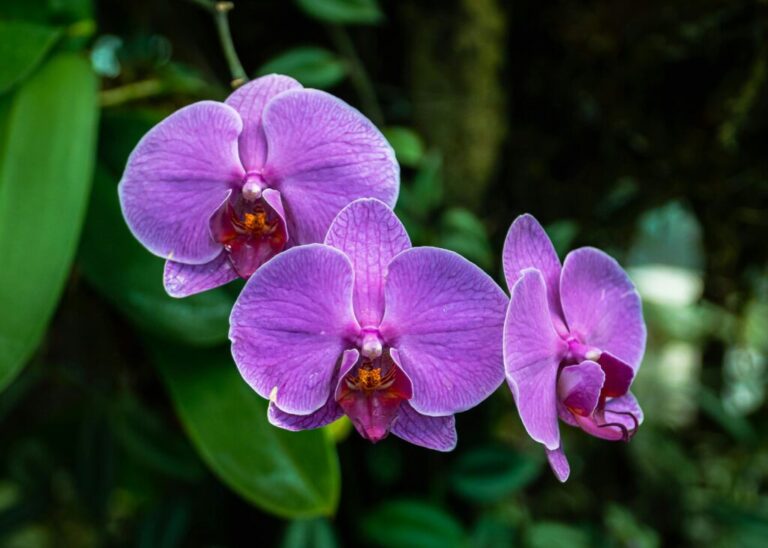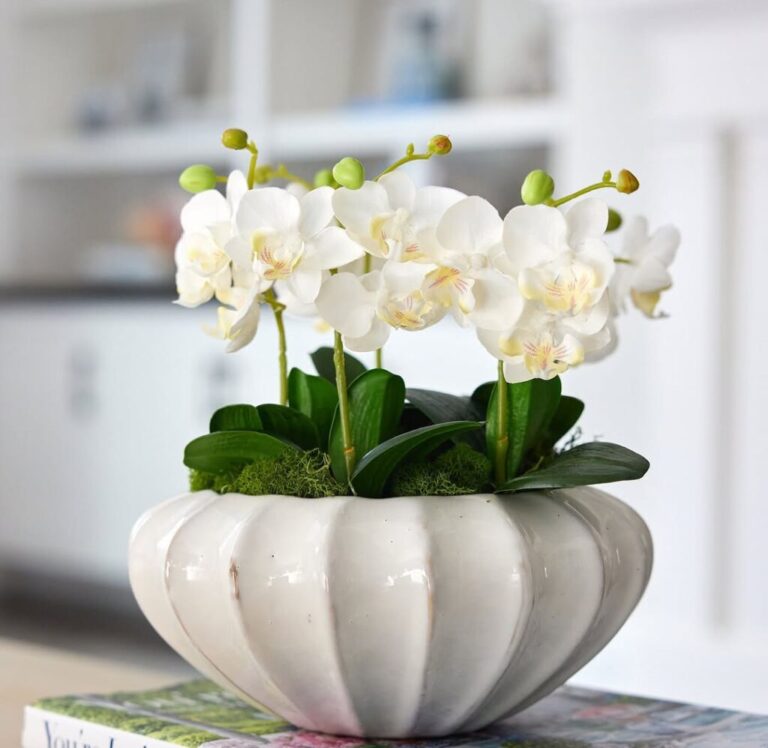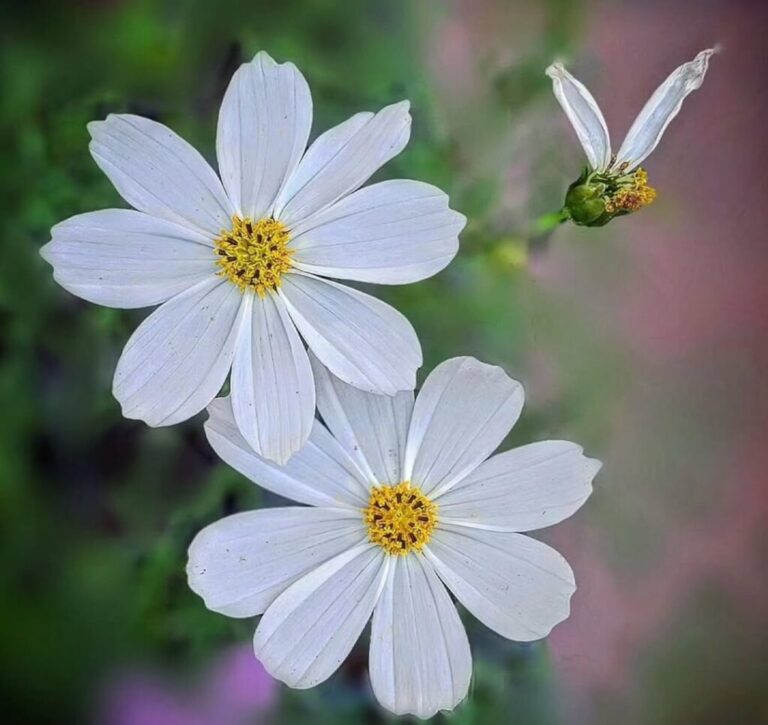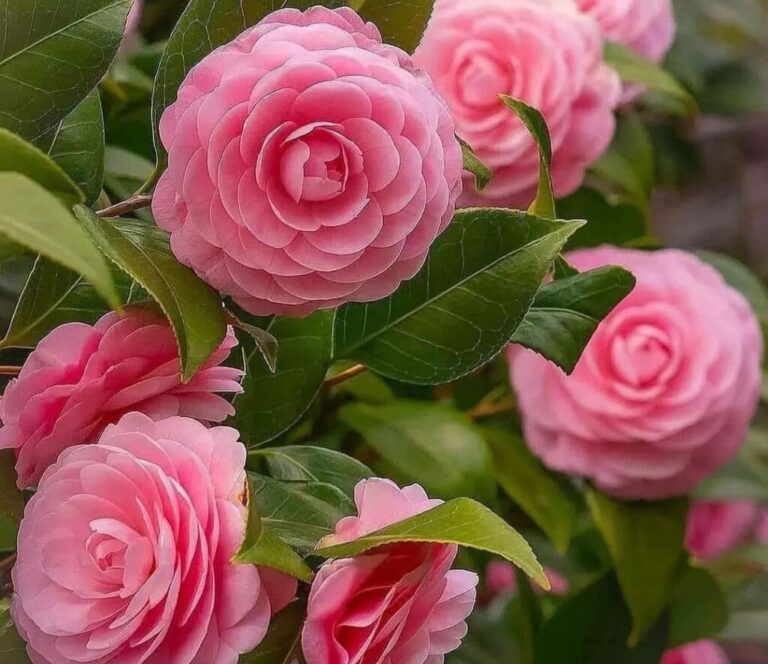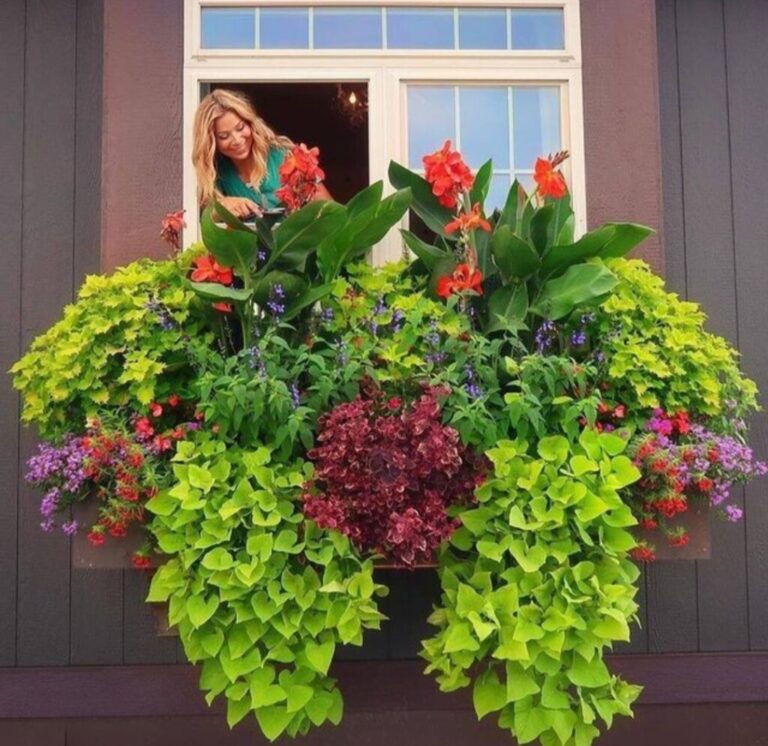If you’re looking for an exotic orchid that thrives indoors with minimal fuss, the Venus Slipper Orchid (Paphiopedilum) is the perfect choice. Known for its striking pouch-like bloom, this orchid is unlike any other. With intricate patterns, elegant curves, and a mysterious allure, the Venus Slipper Orchid stands out as a favorite among both beginners and seasoned orchid enthusiasts.
Unlike many orchids that require high humidity and bright light, Paphiopedilums adapt well to household conditions, making them an excellent choice for indoor growers. They flourish in low to medium light, need no elaborate care routines, and reward patience with long-lasting, unique flowers. Whether you’re a first-time grower or a collector looking to expand your orchid family, this guide will help you plant, grow, and care for your Venus Slipper Orchid effortlessly.
From choosing the right potting mix to mastering the perfect watering schedule, we’ll cover everything you need to ensure your orchid thrives year after year. Follow these 10 expert tips, and you’ll soon enjoy the breathtaking beauty of this one-of-a-kind orchid in your home. Let’s dive in!
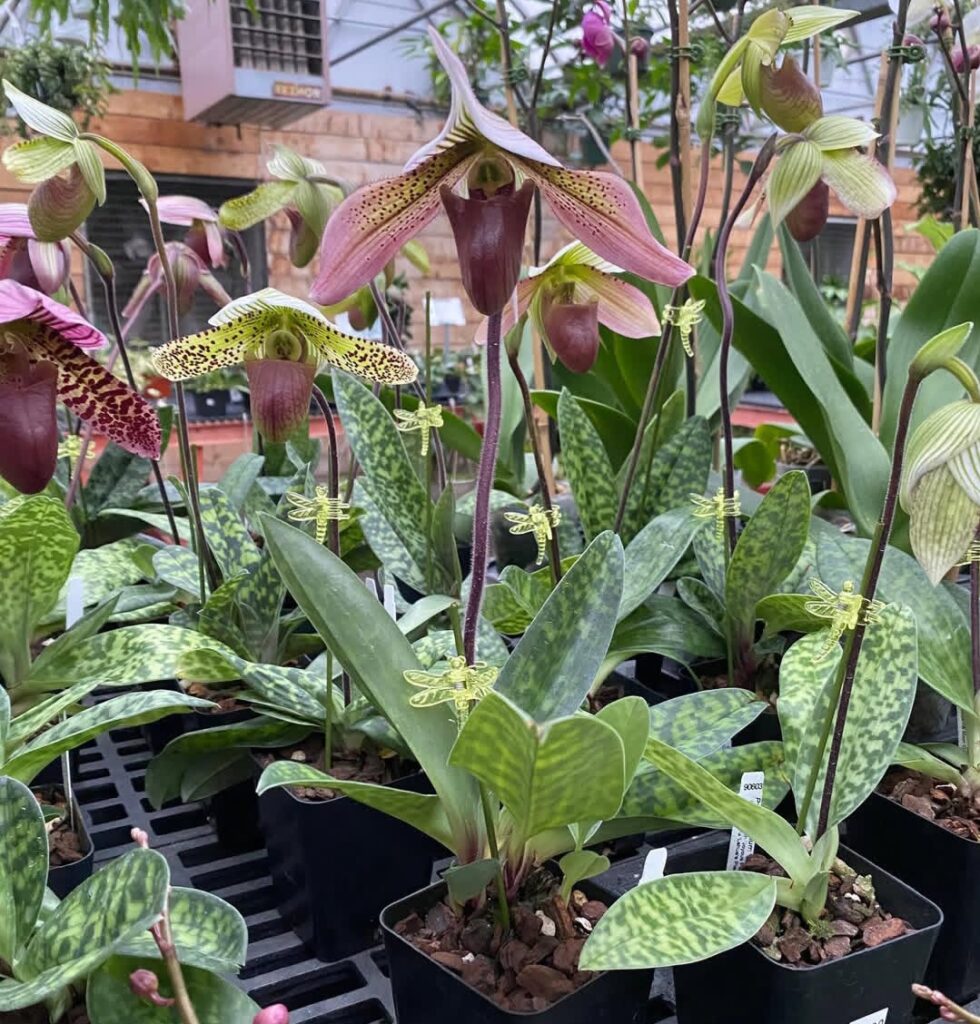
- 1 1. Choose the Right Venus Slipper Orchid Variety
- 2 2. Provide Proper Lighting Conditions
- 3 3. Maintain the Right Temperature and Humidity
- 4 4. Use a Well-Draining Potting Mix
- 5 5. Water Regularly but Avoid Overwatering
- 6 6. Fertilize for Healthy Growth and Blooms
- 7 7. Encourage Blooming with Proper Care
- 8 8. Keep Pests and Diseases Away
- 9 9. Repot When Necessary
- 10 10. Provide Proper After-Bloom Care
- 11 FAQs on Venus Slipper Orchid Care
Venus Slipper Orchid (Paphiopedilum)
| Feature | Details |
|---|---|
| Botanical Name | Paphiopedilum spp. |
| Common Name | Venus Slipper Orchid, Lady’s Slipper Orchid |
| Plant Type | Epiphytic/Terrestrial Orchid |
| Family | Orchidaceae |
| Native Region | Southeast Asia, India, China |
| Size | 6–24 inches tall |
| Bloom Time | Winter to early spring |
| Flower Color | Pink, green, white, purple, yellow, mottled |
| Light Requirements | Low to medium indirect light |
| Watering Needs | Keep evenly moist, avoid drying out |
| Humidity | 50–70% |
| Temperature | 60–75°F (16–24°C) |
| Soil Type | Well-draining orchid mix (bark, perlite, sphagnum moss) |
| Fertilizer | Balanced orchid fertilizer (weekly, diluted) |
| Propagation | Division of clumps |
| Toxicity | Non-toxic to pets and humans |
| Common Issues | Root rot, fungal infections, low humidity problems |
1. Choose the Right Venus Slipper Orchid Variety
There are many Paphiopedilum species and hybrids, each with unique patterns and colors. Some popular choices include Paphiopedilum insigne, which has yellow and green petals, Paphiopedilum maudiae, a hybrid with deep green foliage and striking flowers, and Paphiopedilum rothschildianum, a rare, large-flowered variety with elegant striped petals. Beginners should start with Paphiopedilum maudiae as it is easier to care for than other species.
Tip: Beginners should start with Paphiopedilum maudiae as it is easier to care for than other species.
2. Provide Proper Lighting Conditions
Unlike other orchids, Venus Slipper Orchids prefer lower light levels, thriving in filtered light or under artificial grow lights. Place them near east- or north-facing windows where they receive soft, diffused light. If using artificial lighting, ensure they get at least 12–14 hours daily. Avoid direct sunlight, as it can scorch their delicate leaves and cause leaf burn.
Tip: If the leaves turn dark green, the orchid may need more light. If they turn yellow, it’s getting too much light.
3. Maintain the Right Temperature and Humidity
These orchids love warm, humid environments that mimic their natural rainforest habitat. Maintain daytime highs of 65 to 75°F (18 to 24°C) and nighttime lows of a little lower.. Humidity levels should stay between 50–70%, which can be achieved with a humidity tray, misting, or a room humidifier. Avoid sudden temperature drops, as they can stress the plant.
Tip: If the air is dry, mist the leaves lightly in the morning to prevent dehydration.
4. Use a Well-Draining Potting Mix
Venus Slipper Orchids do not have pseudobulbs, so their roots need a consistently moist yet well-draining potting mix. A combination of bark, perlite, and sphagnum moss works best, allowing airflow while retaining enough moisture. Avoid regular potting soil, as it can cause root rot. Repot the orchid every 1–2 years to refresh the mix and maintain root health.
Tip: If using a plastic pot, make sure it has plenty of drainage holes to prevent water buildup.
5. Water Regularly but Avoid Overwatering
Watering is crucial for Venus Slipper Orchids, as they prefer a consistently moist potting mix. Water once every 3–5 days, depending on humidity and temperature.To avoid mineral accumulation, use distilled or filtered water at room temperature.. Always water in the morning to allow excess moisture to evaporate throughout the day, reducing the risk of fungal diseases.
Tip: If the top inch of the potting mix feels dry, it’s time to water.
6. Fertilize for Healthy Growth and Blooms
Regular feeding helps Venus Slipper Orchids grow strong and produce vibrant blooms. Use a balanced orchid fertilizer (20-20-20) at half strength every two weeks. During winter dormancy, reduce fertilization. Once a month, flush the potting mix with plain water to remove salt buildup from fertilizers, which can harm the roots over time.
Tip: Look for slow-release orchid fertilizers if you prefer a low-maintenance approach.
7. Encourage Blooming with Proper Care
Venus Slipper Orchids typically bloom once a year, but you can encourage flowering with the right conditions. Providing slightly cooler nighttime temperatures (55–65°F) in early fall can help trigger blooming. Ensuring at least 12 hours of light and consistent humidity levels will also increase the chances of flowers developing successfully each season.
Tip: If your plant is mature but not blooming, check if it’s getting enough light and nutrients.
8. Keep Pests and Diseases Away
Common pests such as spider mites, mealybugs, and aphids can infest Venus Slipper Orchids. Inspect leaves regularly and remove pests using neem oil or insecticidal soap. Root rot and other fungal illnesses can result from overwatering.Ensure good air circulation around the plant to prevent mold and mildew, which can weaken the plant over time.
Tip: If the leaves develop black spots, it may be a fungal infection—treat it immediately with a fungicide.
9. Repot When Necessary
Repotting keeps your Venus Slipper Orchid healthy by refreshing the growing medium and preventing root-bound conditions. Repot every 1–2 years, or when the potting mix starts to decompose. Choose a slightly larger pot only if the roots outgrow the current one. Avoid repotting while flowering, as it can cause stress and bud drop.
Tip: If the roots look brown and mushy, trim the damaged parts before repotting.
10. Provide Proper After-Bloom Care
Once your orchid has finished blooming, it enters a rest period where it prepares for future growth. Do not cut the flower spike unless it turns completely brown, as some species rebloom from the same spike. Reduce watering slightly, but maintain humidity levels. Continue fertilizing at a weaker strength to help support the development of new roots and leaves.
Tip: Some species rebloom on the same spike, so avoid cutting it too soon.
The Venus Slipper Orchid is a rewarding and easy-to-care-for orchid, perfect for beginners and experts alike. By following these 10 expert tips, you can successfully plant, grow, and care for this stunning orchid year-round. Whether you’re a collector or just starting, the Venus Slipper Orchid will bring elegance and exotic beauty to your home. Happy growing!
FAQs on Venus Slipper Orchid Care
How do you take care of a Venus Slipper Orchid?
Venus Slipper Orchids (Paphiopedilum) thrive in low to medium indirect light, warm temperatures (65–75°F), and high humidity (50–70%). Keep the potting mix moist but not soggy, use a well-draining mix of bark and sphagnum moss, and fertilize with a diluted orchid fertilizer every two weeks.
What kind of soil is best for Venus Slipper Orchids?
A well-draining orchid mix with bark, perlite, and sphagnum moss is best. These orchids do not have pseudobulbs, so they require a moisture-retentive but airy mix to prevent root rot while keeping the roots hydrated.
How often should I water my Venus Slipper Orchid?
Water every 3–5 days, depending on humidity and temperature. The potting mix should be kept slightly damp but never waterlogged. Always use room-temperature filtered or distilled water to prevent mineral buildup.
Does the Venus Slipper Orchid need sunlight?
Yes, but only indirect or filtered light. Place it near an east- or north-facing window or under artificial grow lights for 12–14 hours daily. The leaves might be burned by direct sunlight, so stay away from it.
What temperature is ideal for Venus Slipper Orchids?
Maintain daytime temperatures of 65–75°F (18–24°C) and slightly cooler nights (55–65°F). Avoid sudden temperature fluctuations, as they can stress the plant and prevent blooming
How do I get my Venus Slipper Orchid to bloom?
Provide consistent care, including proper lighting, cooler nighttime temperatures in early fall, regular fertilization, and maintaining high humidity. A mature plant with healthy roots and leaves will bloom yearly if conditions are met.
Why are the leaves of my Venus Slipper Orchid turning yellow?
Yellowing leaves can be caused by overwatering, too much direct sunlight, or nutrient deficiencies. Check the potting mix, adjust light exposure, and ensure the orchid is receiving proper fertilization.
How do I prevent root rot in my Venus Slipper Orchid?
Use a well-draining potting mix, ensure the pot has drainage holes, and avoid letting the orchid sit in standing water. To let extra moisture evaporate throughout the day, water in the morning.
Can I grow Venus Slipper Orchids indoors?
Yes! These orchids are well-suited for indoor growing. They thrive in household temperatures with moderate humidity. Using a humidity tray or room humidifier can help maintain the right environment.
How often should I repot my Venus Slipper Orchid?
Repot every 1–2 years or when the potting mix starts breaking down. Always repot in fresh orchid mix and avoid disturbing the plant while it’s in bloom.


